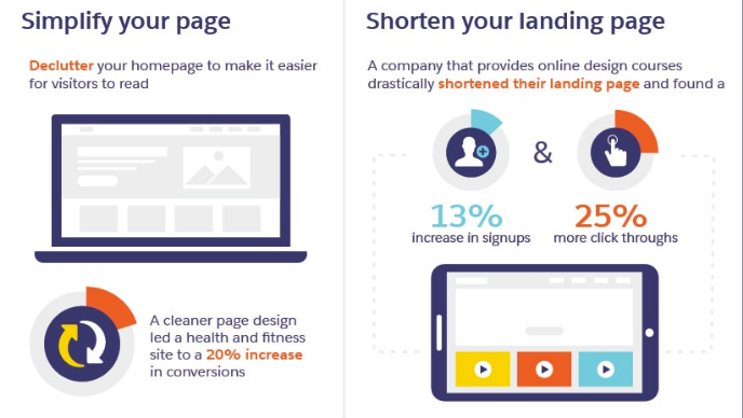
How to Create Successful Landing Pages in Singapore
Singapore presents a unique digital ecosystem. It’s where high-speed internet and mobile devices are an integral part of daily life. As a global financial centre with a multicultural population, the digital platforms here are expected to perform with precision and relevance. This means that landing pages need to be optimized for performance cultural resonance and must adhere to the strict expectations of local and international audiences alike. In the following sections, we will discuss elements that contribute to the success of landing pages in the Singapore market and provide insights into creating pages that don’t just inform but convert.
Understanding the Singaporean Consumer
Singapore’s consumer market is as diverse as it is dynamic, marked by a mix of local residents, expatriates, and a transient workforce. Understanding the Singaporean consumer is not just about statistical and cultural knowledge—it’s about empathizing with values, recognizing diversity, and engaging in a way that feels both personal and culturally attuned. The landing page should not only capture their attention but also speak the same language in the broadest sense.
Singapore boasts a population that is both age-diverse and digitally proficient. From young professionals to tech-savvy seniors, it is crucial to create intuitive landing pages that can be segmented to target specific age groups or interests. Landing pages must be informative and credible, presenting data in a concise and digestible manner. On the psychographic front, Singaporeans are goal-oriented and efficiency-driven. Create landing pages that offer clear value propositions and deliver straightforward solutions.
Regarding culture, the landing page design and messaging must reflect this balance. For instance, colour schemes may carry different connotations among the ethnic groups in Singapore. Red, considered auspicious by Chinese Singaporeans, can be powerful for campaigns around Chinese New Year while being mindful that it may not hold the same resonance with other ethnicities. Moreover, while English is the lingua franca, incorporating elements of the other official languages—Mandarin, Malay, and Tamil—can enhance a sense of inclusivity and local appeal.
Creating a High-Converting Landing Page
Crafting a landing page that transforms visitors into leads requires a deep understanding of what drives user behaviour. A high-converting landing page is one that not only captures the visitor’s initial interest but also engages them at every subsequent point, leading them inevitably towards a well-defined conversion goal.
Clear and Compelling Headlines: Headlines must be sharp and direct, conveying the core benefit or value proposition in a way that resonates with the local audience. It should highlight a unique value proposition, promising a solution or benefit that addresses the user’s needs or interests directly.
Engaging Visuals: Visual elements shape first impressions. They should be selected to evoke familiarity and relevance, utilizing colour schemes, imagery, or graphics that reflect the cultural and visual context familiar to the target audience.
Persuasive Subheadings and Copy: Subheadings are critical in maintaining visitor interest and guiding them towards action. They must be strategically crafted to reinforce the main message and keep the content flowing smoothly. The accompanying copy must maintain this momentum, articulating benefits clearly and addressing the visitor’s questions or concerns. The copy must establish credibility and convey authority to foster trust among visitors.
Technical Aspects of a Page
Incorporating technical aspects is essential for creating landing pages that are not only user-friendly but also competitive in organic search results. A technically optimized page is the foundation upon which all other conversion elements are built.
Mobile Optimization: A substantial portion of internet traffic comes from smartphones. This means designing with a mobile-first approach to ensure that layouts, images, and CTAs appear seamlessly on smaller screens. The navigation should be effortless, with touch-friendly buttons and readable text, adapting responsively to various screen sizes and orientations.
Loading Speed: Page loading speed is directly linked to user satisfaction and conversion rates. Slow-loading pages risk increased bounce rates as users expect near-instant access to information.
Techniques to enhance loading speed include image compression, minifying CSS, JavaScript, and HTML files, leveraging browser caching, and utilizing content delivery networks (CDNs). Each of these strategies can contribute to a more streamlined user experience.
SEO Considerations: Local Search Engine Optimization (SEO) ensures that a landing page is not only visible but also ranks well in search engine results locally. This encompasses keyword integration, where research is key to identifying terms that align with user search intent.
Meta tags, alt text for images, and structured data enhance the page’s comprehensibility to search engines. Furthermore, linking strategies, both inbound and outbound, can establish a page’s authority and relevance. Ensuring that content is engaging and value-driven contributes to improved search rankings through enhanced user engagement signals.
Crafting a Unique Value Proposition
A unique value proposition (UVP) is of a landing page’s effectiveness. It is a clear statement that describes the benefit of the offer, how it solves customers’ needs, and what distinguishes it from the competition. The first step in crafting a UVP is understanding the specific needs and desires of the target audience. This involves market research to pinpoint exactly what the local customer base is seeking in a product or service.
Are there certain pain points or challenges that are unique to them? What kind of solutions are they yearning for? The answers to these questions should be reflected in the UVP, showcasing an understanding of and empathy for the local audience. Once the needs are identified, the next step is to articulate how the offer uniquely meets these needs in a way that competitors do not.
This differentiation can be based on several factors, such as price, quality, innovation, customer service, or user experience. The UVP should distill this differentiation into a concise statement that is easily communicated and understood at a glance. A strong UVP communicates the specific benefits that the offer can provide, making a case for why it is the preferred choice. It also instills confidence that the customer’s particular needs are understood and can be met effectively.
Call-to-Action (CTA) Strategies
The placement of a CTA can greatly affect its visibility and, by extension, its effectiveness. A CTA should be positioned in a high-visibility area where users naturally focus, such as directly beneath the offer description or at the end of the landing page’s content. It’s also beneficial to have a CTA appear fixed at the bottom or top of the screen as users scroll.
The design of the CTA button itself is equally critical. It should stand out from the rest of the page in color and size, but still feel cohesive with the overall design scheme. A contrasting color that is still harmonious with the palette can draw the eye, while a larger size can denote importance. Moreover, the CTA button should be large enough to be easily tapped on a mobile device, emphasizing the mobile-first approach.
Crafte urgency and relevance in CTAs. Phrases like “Offer ends soon,” “Limited availability,” or “Start your free trial now” can instill a sense of urgency that encourages users to act immediately. However, it’s important that any claims made are genuine to maintain trust with the audience. The CTA should echo the user’s intent or needs.
For example, if the landing page is for a seminar, a CTA like “Reserve Your Seat Today” directly relates to what the visitor is looking for. Personalizing the CTA based on the user’s behavior or the content they’ve engaged with can further enhance relevance.
For instance, if they’ve spent time reading about specific features, the CTA could say “Try Feature X Now.” For maximum impact, a CTA should be concise, actionable, and lead with a strong verb. It should also be surrounded by whitespace to set it apart and reduce visual clutter, allowing it to be a focal point on the landing page.
Design and Content Styles
A landing page must be designed to inspire confidence and establish credibility from the moment a visitor arrives. Incorporating social proof is a powerful way to validate the offer and the brand.
This can take the form of customer testimonials, which should be strategically placed where they can have the most impact—often near the call to action or alongside descriptions of products or services. For even greater effect, these testimonials can include real names, pictures, or logos of the companies that customers represent, provided there is consent to do so.
User-generated content, like reviews and ratings, also serve as forms of social proof. They show prospective customers that others have not only made the same choice they’re considering but were satisfied enough to share their positive experiences. It’s also beneficial to highlight any media mentions or endorsements from well-known figures within relevant industries.
Displaying certifications and trust badges can significantly enhance a landing page’s trustworthiness. This includes industry-specific accreditations, security seals, and any awards or recognitions. For businesses operating within a specific region, showing local accreditations or membership in regional business networks can resonate strongly with the audience.
Trust badges from well-known Singapore security firms or badges indicating compliance with Singaporean standards (e.g., Personal Data Protection Act compliance) can also add layers of trust. Highlighting affiliations with Singaporean industry networks or local chambers of commerce provides further validation.
For e-commerce websites or any financial transactions involved, displaying recognized Singaporean payment gateways and security certifications such as the Infocomm Media Development Authority (IMDA) Trustmark can help assure customers of the security and reliability of their online transactions.
Conclusion
The development of a successful landing page hinges on a blend of strategic design, compelling content, and technical precision. By using these principles. effectively engage with the Singaporean audience, encouraging conversions and ultimately driving the success of digital marketing campaigns.
Remember, the goal of a landing page is not just to attract clicks, but to build a connection that converts a visitor into a loyal customer. ARCC is a website development company based in Singapore that specializes in creating industry-specific landing pages tailored to meet the unique needs of diverse target audiences. Get in touch to discover how our landing page development services can elevate your online presence.








